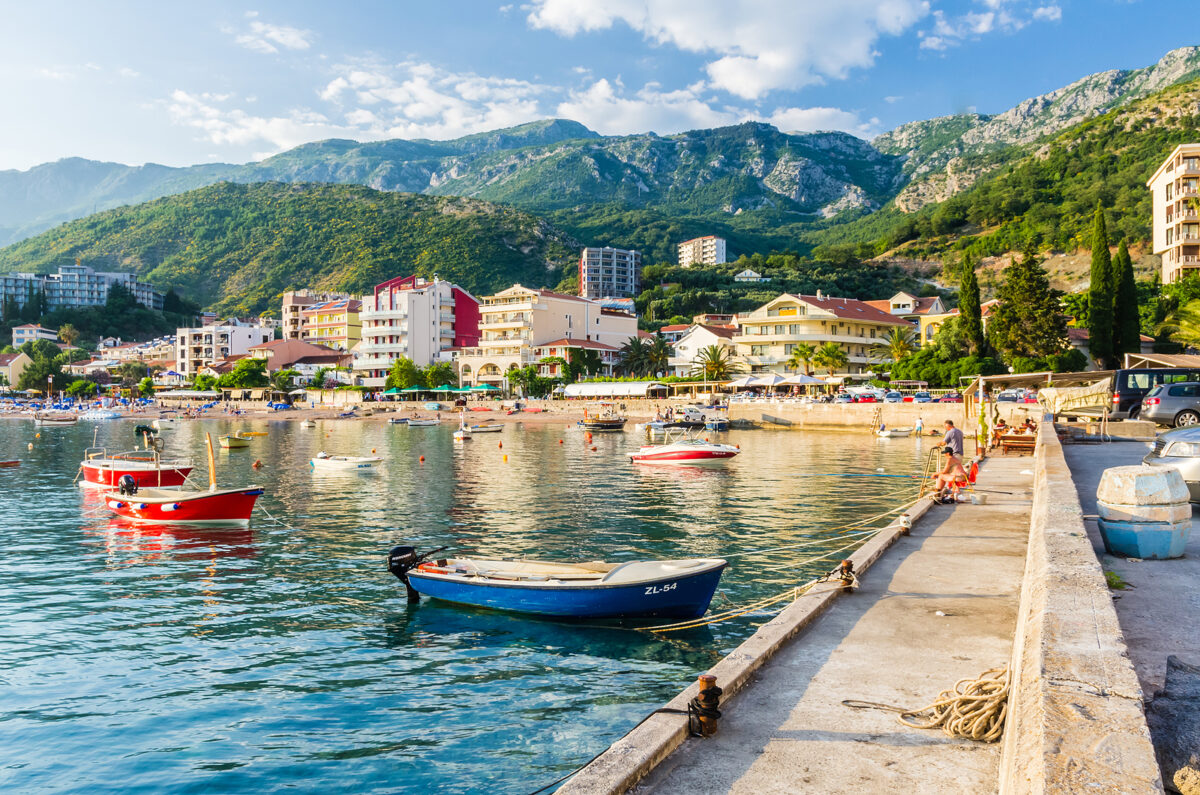The smallest country in the emerging Europe region, home to fewer than 650,000 people, Montenegro’s open, service-based economy is highly vulnerable to external shocks, and it relies on fiscal policy and structural reforms to maintain macroeconomic stability.
Over the past decade, Montenegro has embarked on a path of economic transformation, a journey marked by significant growth, sectoral diversification, and increasing integration into global markets.
However, the country continues to grapple with challenges stemming from its political landscape, geopolitical influences, and the need for sustainable development.
Montenegro’s economy has undoubtedly demonstrated resilience and growth over the past ten years. According to the World Bank, the country’s GDP reached 7.6 billion US dollars in 2023, with a per capita income of 12,252 US dollars.
Earlier this month, the European Commission forecast that Montenegro’s GDP is expected to grow 3.9 per cent in 2024, exceeding a projected increase of 3.4 per cent announced in May, but still well below the robust 6.3 per cent growth rate recorded in 2023.
The Commission also increased its forecast for Montenegro’s economic growth in 2025 to 4.2 per cent, up from three per cent forecast in May.
“Economic growth is projected to accelerate in 2025 as newly adopted policy measures are likely to provide a boost for private consumption and investment. This impact is expected to moderate in 2026,” the Commission said.
Average annual inflation meanwhile is seen slowing down to 3.8 per cent this year from last year’s 8.6 per cent, while in 2025 it is seen quickening again, slightly, to 4.1 per cent on the back of substantial increase in wages and social transfers.
Montenegro’s growth has been primarily driven by the services sector, notably tourism, which has capitalised on the country’s superb Adriatic coastline and rich cultural heritage.
Indeed, the tourism industry has been a cornerstone of Montenegro’s economic expansion, accounting for around 30 per cent of GDP. In recent years, the country has attempted to shift a greater percentage of the tourist trade away from low-revenue package tours into more luxurious and upscale projects, such as the Porto Montenegro development near Tivat.
Beyond tourism, Montenegro has made at least some strides in diversifying its economy. The information technology sector, though still emerging, has shown promise. The government has implemented initiatives to foster a digital economy, including investments in digital infrastructure and incentives for tech start-ups. In the latest, 2024 edition of Emerging Europe’s Future of IT report, Montenegro was ranked 14th (of 23 countries) in the IT Competitiveness Index, a big improvement on 20th place in 2023.
However, the IT sector’s contribution to GDP remains modest, at 4.4 per cent in 2022, and further development is necessary to establish it as a significant economic pillar.
Economic vulnerabilities
Despite these positive trends, Montenegro faces several economic challenges. The country’s heavy reliance on tourism renders it vulnerable to external shocks, as evidenced by the Covid-19 pandemic’s impact: GDP fell by more than 15 per cent in 2020.
The World Bank has highlighted the need for fiscal policy and structural reforms to maintain macroeconomic stability, given the economy’s susceptibility to external fluctuations.
Public debt is another pressing concern. While the European Commission has projected that Montenegro’s public debt is set to decrease to 61 per cent of GDP by 2026, the need for debt refinancing remains significant, scheduled to peak at 11 per cent of GDP in 2025.
High public spending, limited revenue sources, and substantial impending debt repayment obligations pose ongoing fiscal challenges.
Additionally, while the labour market has shown signs of recovery, with employment gains contributing to a record high activity rate and a record low unemployment rate of just under 11 per cent in August 2024, structural issues persist. Youth unemployment remains high, estimated at anywhere from 25-30 per cent.
The economy’s capacity to generate high-quality, sustainable jobs remains limited, necessitating reforms in education and labor policies to align workforce skills with market demands.
Political and geopolitical context
Montenegro’s political landscape is intricately linked to its economic prospects. The country’s aspirations to join the European Union have been a driving force behind various reforms.
However, significant rule of law challenges have slowed the accession process, reflecting a key development constraint. Since starting accession negotiations in 2012, Montenegro has aligned its legislation with the EU acquis and made efforts to improve living standards. Yet, the growth strategy has largely relied on attracting a few large investment projects in transport, energy, or tourism.
Relations with Serbia remain a complex aspect of Montenegro’s political context. Historical ties and cultural connections have been juxtaposed with political tensions, particularly concerning national identity and foreign policy orientations. These dynamics have implications for regional stability and economic cooperation.
Russian influence in Montenegro has been a subject of scrutiny, especially in the context of the country’s NATO membership and EU aspirations. Russia’s efforts to exert influence through political channels, economic investments, and media presence remain a concern. The extent to which the EU and NATO are effective in countering Russian influence in Serbia, Bosnia and Herzegovina, and Montenegro is a pertinent issue.
Foreign investment
Foreign direct investment (FDI) has been a vital component of Montenegro’s economic development. The World Bank reports that FDI net inflows have been substantial, reflecting investor confidence in sectors such as tourism, real estate, and energy. In 2022, FDI accounted for 9.3per cent of GDP, indicating a significant role in the economy.
However, the concentration of FDI in specific sectors poses risks. The reliance on tourism and real estate investments underscores the need for diversification to enhance economic resilience. Attracting investment in manufacturing, technology, and renewable energy could provide more balanced growth and reduce vulnerability to sector-specific downturns.
The government has recognised the importance of creating a conducive environment for diverse investments, but efforts to improve the business climate, streamline regulatory frameworks, and combat corruption are essential to attract and retain foreign investors.
Additionally, aligning investment strategies with sustainable development goals can ensure that economic growth benefits broader segments of society and preserves environmental integrity.
A multifaceted approach to growth
Montenegro’s economic journey over the past decade reflects a narrative of growth, diversification, and integration into the global economy. The tourism sector has been a significant driver, complemented by emerging industries like IT.
However, challenges related to economic vulnerabilities, public debt, and geopolitical influences persist.
Addressing these challenges requires a multifaceted approach. Structural reforms to enhance fiscal stability, investments in education and infrastructure, and efforts to strengthen the rule of law are crucial. Moreover, the political and geopolitical landscape necessitates strategic diplomacy and more alignment with international partners.
Perhaps most importantly, to achieve higher standards of living, Montenegro’s growth strategy should be based on productivity and human capital gains while preserving natural resources to enable sustainable development. This would require enforcing competition and consistent policy implementation, better leveraging trade, improving human capital by reducing inequality of opportunity, and empowering public institutions.







